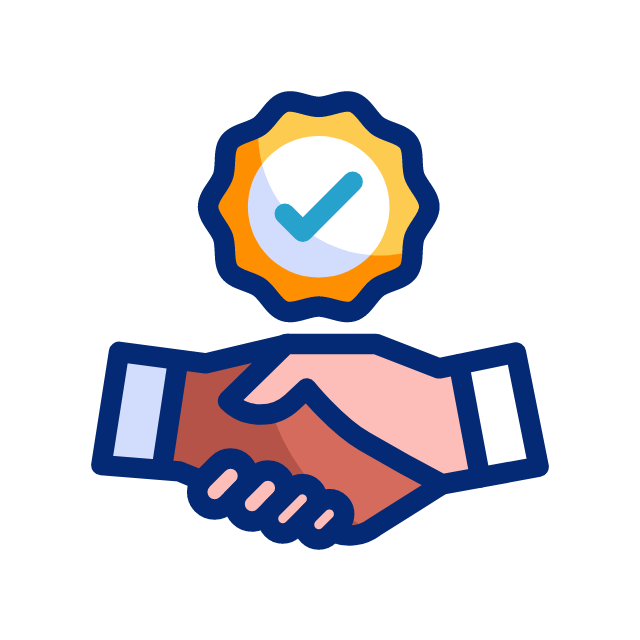Introduction
This blog is for students who are interested in entering the field of data science, or those who are already part of it and want to refine their understanding. The insights come from a conversation with Mr. Talos (an alias), a Master’s student in Data Science at IIT Madras—one of India’s leading institutes. He discussed the foundational subjects essential for data science, the tools and programming languages he uses, examples of real-world projects he has worked on, the current job market scenario, and practical advice for students to prepare themselves. Throughout the discussion, he emphasized that having strong fundamentals, applying them to real data, and showcasing one’s work are all important steps in building a successful data science career.
Foundational Subjects in Data Science
According to Mr. Talos, there are three fundamental subjects that anyone aiming to excel in data science should know thoroughly:
-
Calculus
-
Probability
-
Linear Algebra
These three subjects form the building blocks upon which machine learning (ML) and artificial intelligence (AI) algorithms are built. A student or professional should be comfortable with these areas because they underpin the mathematical understanding of how different models work. Being strong in these fundamentals makes it easier to grasp advanced concepts, design better solutions, and excel in both academic projects and industry-related tasks.
Programming Languages and Tools
After establishing a strong mathematical foundation, acquiring hands-on skills with at least one programming language is crucial. Mr. Talos suggested:
-
Python: Widely used in data science due to its rich ecosystem of libraries and frameworks.
-
R: Often preferred in bio-related fields, as it comes with many ready-made packages that simplify statistical analyses and data manipulation tasks.
He noted that people don’t have to recode everything from scratch because many of these functions and models have already been implemented in these languages. This allows data scientists to focus on applying and fine-tuning models rather than reinventing them.
In addition, he recommended using a Linux-based environment. Linux makes handling files and dependencies smoother, which is helpful in a field that often involves managing multiple libraries and datasets. For coding, he prefers using Visual Studio Code (VS Code) because it offers many extensions and tools that enhance productivity and coding speed.
Since a lot of AI-related tasks benefit from accelerators like GPUs, Mr. Talos pointed out that students can use platforms like Google Colab and Kaggle, which provide free GPU access. This allows them to run more complex experiments without needing expensive hardware on their personal computers.
Practical Hacks and Workflow Improvements
To make the day-to-day coding and experimentation process smoother, Mr. Talos advised:
-
Adopting a Linux environment for file and dependency management.
-
Using a good code editor like VS Code to improve the coding experience and utilize time-saving tools.
-
Leveraging Colab and Kaggle’s free GPUs for training ML and DL models, enabling students to learn and practice without high computational costs.
By integrating these tools and platforms, students and professionals can spend more time focusing on the data and models, and less time dealing with technical hurdles.
Projects and Past Work Experience
Before joining his Master’s program, Mr. Talos worked at multiple multinational companies (MNCs), engaging in projects that involved both computer vision and natural language processing (NLP).
For computer vision, he mentioned working on classification problems, such as identifying defective versus non-defective parts. He also worked on image segmentation tasks in the context of autonomous cars. In such projects, a car’s camera provides a continuous video feed, and the job is to segment the pixels into categories—road pixels, car pixels, and other relevant objects. This allows the autonomous system to understand its environment at a pixel-by-pixel level.
In machine learning tasks, he worked on telecommunications-related projects. For example, predicting whether a customer would remain with a service provider or discontinue their subscription. Understanding why customers leave and what can be offered to retain them involves analyzing data and building predictive models that guide business decisions. Companies can then act proactively, offering suitable discounts or improvements to keep customers satisfied.
He emphasized that these kinds of business-oriented ML projects are very common because companies in various sectors want to leverage data science for making informed decisions. They want to identify what influences customers’ actions and figure out which interventions will lead to better retention and growth.
Job Opportunities and Market Outlook
Data science is currently in high demand. According to Mr. Talos, it is not limited to traditional software companies. Many different industries are now building their in-house data science teams:
-
Pharmaceutical companies: They may have traditionally relied on biological experts, but now they also want data scientists who can help them derive insights from their research data.
-
Financial companies: They want to understand their clients better and create products that cater more precisely to user needs.
-
Telecom companies: They use data science to predict customer churn and improve customer retention strategies.
-
Shipping and logistics firms: They can analyze their operational data to optimize routes, reduce costs, and streamline processes.
Mr. Talos pointed out that every company, in almost every sector, has some data—large or small—that they want to use to gain actionable insights. They are actively looking for qualified candidates who can help them make sense of this data.
Preparation and Skill Development
With data science being such a hot field, Mr. Talos suggested that students should start by strengthening their fundamental mathematical concepts—calculus, probability, and linear algebra. Real-world problems are often messy and not as straightforward as textbook examples. Strong fundamentals help in tackling the complexities found in practical scenarios.
After getting a good grip on the basics, students should practice on real datasets and real questions. Platforms like Kaggle provide datasets and challenging questions, simulating the kinds of problems one might encounter on the job. This helps students learn how to answer specific questions from the data, test their models, and improve their analytical thinking.
He also encouraged students to not only do projects but share their results publicly. Posting projects on LinkedIn, or writing a blog about their work, can attract attention from potential employers and collaborators. Demonstrating their skills in a public forum gives them a chance to show how they approach data problems, how they interpret results, and how they communicate findings.
Suggested Project Ideas for Students
Near the end of the conversation, Mr. Talos offered some project ideas:
-
Starting with a financial-oriented project using simple models like linear regression or logistic regression is a good approach. Many financial industries need explainable models due to regulations. For instance, if a bank denies a loan to someone, they must explain why. Linear and logistic regression models make it easier to provide such explanations because these models are more interpretable.
-
After gaining confidence with these simpler, explainable models, students can choose projects based on their interests. For computer vision, projects can involve image classification, segmentation, or object detection. For those interested in NLP, there are projects involving generative AI or other NLP techniques. These specialized projects help students build deeper skills in areas they find most intriguing.
Conclusion
The conversation with Mr. Talos shows that data science relies heavily on strong mathematical foundations, practical programming skills, and exposure to real-world problem-solving. He emphasized that calculus, probability, and linear algebra are the core subjects, while Python and R are valuable programming languages. Using Linux, VS Code, and free GPU resources on Colab or Kaggle can enhance productivity and learning speed.
His experience in computer vision and NLP underscores the variety of tasks data scientists handle, from identifying defective parts to segmenting roads and vehicles for autonomous cars, and from predicting customer churn to guiding business decisions in telecom.
As the field of data science grows, more companies from diverse sectors seek these skills. Students should strengthen their fundamentals, practice on real datasets, share their projects publicly, and pick project topics that reflect both essential ML concepts and their personal interests. By following these steps, they will be well-prepared to enter and thrive in the fast-growing world of data science.

























